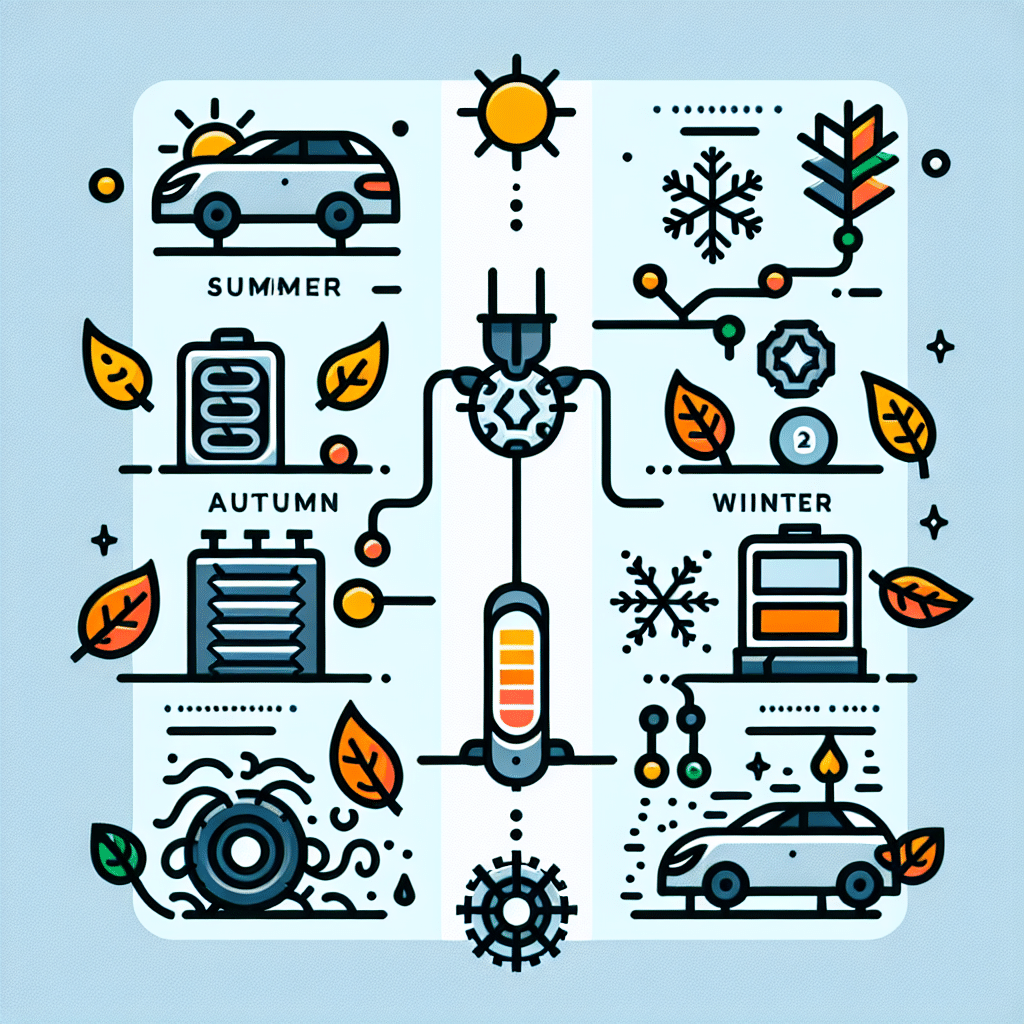Seasonal Maintenance Checklist for Electric Vehicles (EVs)
Electric Vehicles (EVs) are becoming increasingly popular due to their environmental benefits and cost-saving potential. However, like all vehicles, they require regular maintenance to keep them running smoothly. Seasonal checks are particularly important to ensure that every component of your EV operates efficiently throughout the year. Here’s a detailed seasonal maintenance checklist for EVs to keep your ride in optimal condition.
Spring Maintenance Checklist
-
Battery Health Check
- Inspect the battery’s state of charge and state of health using the vehicle’s onboard diagnostics.
- Look for any signs of corrosion at the terminal connections.
- Examine the battery cooling system to ensure it’s functioning effectively; clean any debris away from vents.
-
Tire Inspection
- Check tire pressure; it often changes with temperature fluctuations.
- Look for tread wear and ensure it meets safety requirements.
- Rotate tires if they haven’t been rotated in the last 5,000–7,500 miles.
-
Brake System
- Inspect brake pads and rotors for wear.
- Check brake fluid levels and replace if the fluid appears discolored or below the minimum mark.
- Test regenerative braking functionality to ensure it’s operational.
-
Wiper Blades and Fluid
- Replace wiper blades if they are worn or not clearing the windshield effectively.
- Top off windshield washer fluid with a spring-specific formula to remove any winter road grit.
-
Cooling System Check
- Inspect coolant levels for the battery temperature management system.
- Flush and replace the coolant every 2–3 years to ensure effective cooling of components.
Summer Maintenance Checklist
-
Battery Cooling Examination
- Clean air intake ducts and fans that help cool the battery.
- Monitor battery temperature during hot days; maintain optimal charging practices to avoid overheating.
-
Tire Maintenance
- Re-assess tire pressure, as it can increase in the summer heat.
- Ensure tires are rotated correctly for optimal wear.
-
Cabin Air Filter
- Replace the cabin air filter to ensure optimal air quality and HVAC efficiency during the hot months.
- Check for any blockages or mold.
-
Brake System Review
- Inspect the brake pads and rotors, focusing on any signs of wear from increased summer traffic.
- Examine brake fluid for moisture content; ensure it’s under 2%.
-
Exterior Checks
- Wash and wax the vehicle to protect paint from UV damage.
- Inspect seals around doors and windows for drafts or leaks.
Fall Maintenance Checklist
-
Battery Status Assessment
- Check the battery’s overall performance as winter approaches.
- Evaluate range and charging times, noting any decreases which may indicate a need for further checks.
-
Tire Preparation
- Inspect all tires for signs of damage or uneven wear.
- Consider switching to winter tires if you live in a region with severe snowfall or icy conditions.
-
Headlight and Taillight Check
- Inspect all lights to ensure optimal visibility; replace any burnt-out bulbs.
- Clean lenses to improve clarity and effectiveness.
-
Brake Fluid and System
- Schedule a thorough brake system check; fall often brings increased traffic.
- Monitor brake responsiveness, especially during rain or early snow.
-
Fluid Levels
- Check and top off all fluids: windshield washer, coolant, brake fluid, and even cabin air conditioning refrigerant.
Winter Maintenance Checklist
-
Battery Performance
- Monitor battery performance closely; cold temperatures can affect range.
- Use thermal blankets or battery warmers if you live in extremely cold climates.
-
Tire Inspection
- Examine winter tires for tread depth; ensure they meet local regulations.
- Keep tire pressure checked regularly as colder temperatures can lead to reduced tire pressure.
-
Wiper Blades and Fluid
- Invest in winter-grade wiper blades to handle snow and ice effectively.
- Ensure washer fluid is rated for sub-zero temperatures.
-
Charging System Check
- Verify the charging port is clean and free from ice or snow build-up.
- Ensure that your home charging setup is functioning properly; consider upgrading to a winterized charger.
-
Interior Maintenance
- Inspect and adjust cabin heating systems, so they’re ready for chilly days.
- Ensure that floor mats or protective liners are in place to protect the car’s interior from snow and dirt.
Additional Tips for All Seasons
-
Software Updates
- Regularly check for the latest updates for your EV’s software; manufacturers often release improvements that enhance battery performance or vehicle efficiency.
-
Inspection of Cables and Connectors
- Conduct a visual inspection of high-voltage cables for signs of wear or damage.
- Ensure all connectors are free from corrosion and are tightly connected.
-
Emergency Kit Preparation
- Assemble a seasonal emergency kit including a charging cable, first-aid kit, flashlight, and battery jumper.
By adhering to this seasonal maintenance checklist, you can help prolong the life of your electric vehicle while ensuring maximum safety and performance on the road. Regular inspections allow you to catch potential issues early, maintain vehicle efficiency, and prepare for the challenges of changing weather conditions. Follow this thorough approach, and your EV will be ready to tackle any season without a hitch.
